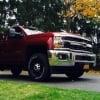-
Similar Content
-
- 4 replies
- 2,592 views
-
- 0 replies
- 2,211 views
-
- 8 replies
- 2,846 views
-
- 8 comments
- 5,235 views
-
- 6 replies
- 2,217 views
-
-
Recently Browsing 0 members
- No registered users viewing this page.
-
Forum Statistics
247.7k
Total Topics2.6m
Total Posts -
Member Statistics
-
Who's Online 9 Members, 1 Anonymous, 2,297 Guests (See full list)
















Recommended Posts
Join the conversation
You can post now and register later. If you have an account, sign in now to post with your account.